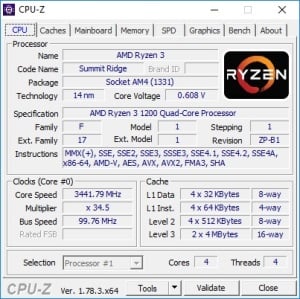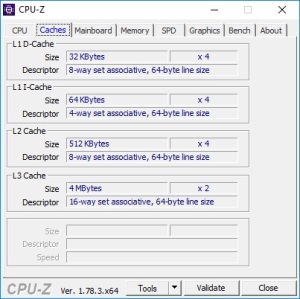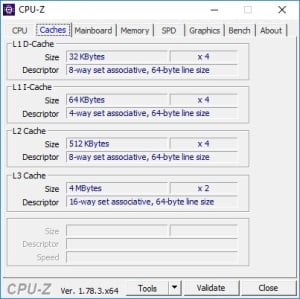AMD Ryzen 3 1300X And 1200 Processor Review: More Affordable Zen
AMD Ryzen 3 Processors - All You Need To Know
AMD is officially launching its latest series of Ryzen processors today, the affordably priced Ryzen 3. As the branding suggests, Ryzen 3 will complement the previously launched Ryzen 7 and Ryzen 5 series of desktop processors, but will target lower cost, entry-level price points.
Ryzen 3 isn’t your typical, entry-level processor, however. Ryzen 3 actually utilizes the same die as its higher-end siblings, but has fewer active cores and symmetrical multi-threading (SMT) has been disabled. Ryzen 3 processors feature quad-core configurations, however, they leverage the same socket and packaging, have the same features, and are fully unlocked for easy overclocking.
We’ve got the Ryzen 3 1300X and Ryzen 3 1200 quad-core processors in house and have powered through a series of benchmarks with both chips to show you where they stand versus and array of AMD and Intel processors. Before we dive into the numbers, let’s get some specifics out of the way...
Both the Ryzen 3 1300X and Ryzen 3 1200 feature 2+2 CCX configurations, which is to say two cores, from each quad-core CCX (CPU Complex) in an eight-core Zen-based processor have been disabled. Both of the processors feature 65W TDPs, 8MB of shared L3 cache, 512K of L2 cache per-core, and they both include AMD Wraith Steath coolers in their retail packaging as well.


AMD Ryzen 3 1300X CPU-Z Details
The Ryzen 3 1300X has a base clock of 3.5GHz, with a 3.6GHz all-core boost clock, a 3.7GHz two-core boost, and a max XFR boost clock of 3.9GHz. At those frequencies, the Ryzen 3 1300X’s performance in single-threaded (or lightly threaded) workloads should be right about in-line with the similarly clocked Ryzen 7 1700X.


AMD Ryzen 3 1200 CPU-Z Details
The Ryzen 3 1200’s default clocks are decidedly lower. Its base and all-boost clocks are both only 3.1GHz, and its two-core boost tops out at 3.4GHz. XFR pushes the max single-core clock up to 3.45GHz.
Both of these processors target affordably priced, mainstream desktop and entry-level gaming systems, and though they both have 65W TDPs, the Ryzen 3 1200’s relatively low-power consumption in real-world scenarios will likely make it a good candidate for quiet, small form factor systems as well.
We're going to dive right into some benchmarks next, but if you'd like a refresher on the technology that makes Ryzen tick, we suggest reading our launch coverage of the Ryzen 7 series -- we cover the architecture in-depth in that article.
Ryzen 3 isn’t your typical, entry-level processor, however. Ryzen 3 actually utilizes the same die as its higher-end siblings, but has fewer active cores and symmetrical multi-threading (SMT) has been disabled. Ryzen 3 processors feature quad-core configurations, however, they leverage the same socket and packaging, have the same features, and are fully unlocked for easy overclocking.
We’ve got the Ryzen 3 1300X and Ryzen 3 1200 quad-core processors in house and have powered through a series of benchmarks with both chips to show you where they stand versus and array of AMD and Intel processors. Before we dive into the numbers, let’s get some specifics out of the way...
|
Both the Ryzen 3 1300X and Ryzen 3 1200 feature 2+2 CCX configurations, which is to say two cores, from each quad-core CCX (CPU Complex) in an eight-core Zen-based processor have been disabled. Both of the processors feature 65W TDPs, 8MB of shared L3 cache, 512K of L2 cache per-core, and they both include AMD Wraith Steath coolers in their retail packaging as well.


AMD Ryzen 3 1300X CPU-Z Details
The Ryzen 3 1300X has a base clock of 3.5GHz, with a 3.6GHz all-core boost clock, a 3.7GHz two-core boost, and a max XFR boost clock of 3.9GHz. At those frequencies, the Ryzen 3 1300X’s performance in single-threaded (or lightly threaded) workloads should be right about in-line with the similarly clocked Ryzen 7 1700X.


AMD Ryzen 3 1200 CPU-Z Details
The Ryzen 3 1200’s default clocks are decidedly lower. Its base and all-boost clocks are both only 3.1GHz, and its two-core boost tops out at 3.4GHz. XFR pushes the max single-core clock up to 3.45GHz.
Both of these processors target affordably priced, mainstream desktop and entry-level gaming systems, and though they both have 65W TDPs, the Ryzen 3 1200’s relatively low-power consumption in real-world scenarios will likely make it a good candidate for quiet, small form factor systems as well.
We're going to dive right into some benchmarks next, but if you'd like a refresher on the technology that makes Ryzen tick, we suggest reading our launch coverage of the Ryzen 7 series -- we cover the architecture in-depth in that article.







